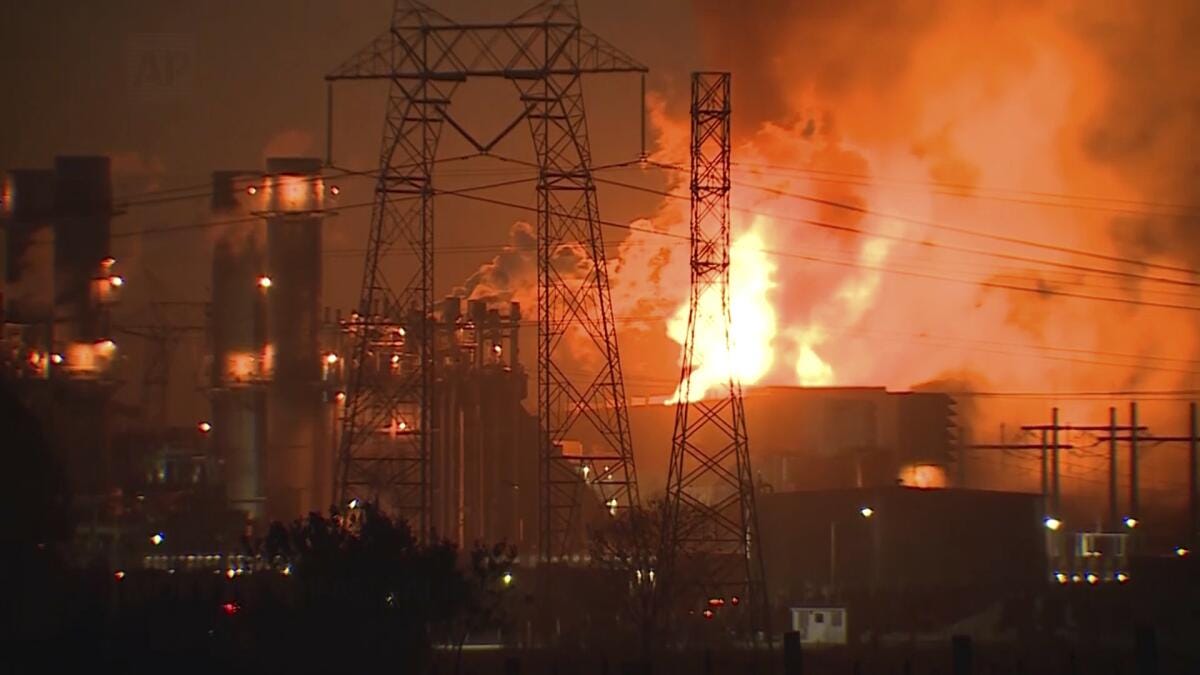Utility-scale batteries are very vulnerable to fire
in addition to being as expensive as nuclear power plants.

Make someone’s day: Gift a subscription to your friends and family!
My regular readers know that I often write about energy because energy is a key element in human material progress. One of my most popular articles to date was Utility-scale batteries are as expensive as nuclear power.
To illustrate the massive cost of utility-scale batteries, I focused on the Moss Landing Energy Storage Facility in Monterey California. Moss Landing is the largest lithium-ion battery energy storage system in the world. I have been there on several occasions as I have family in the region. It is massive.
The Moss Landing energy storage system consists of more than 110,000 battery modules in 122 containers. Its total capacity is 750 MW/3,000 MWh. If I understand the units of measurement correctly, the entire battery system can output 750 MW of electricity for a total duration of 4 hours (3000 / 750 = 4).
This means that even the largest battery storage system in the world:
Cannot even store enough electricity to replace a typical fossil fuel or nuclear plant (1000 MW), and
It can only approximate the output for 4 hours.
If we assume that we want to replace just one 1000 MW power plant with 12 hours of battery storage (enough for a solar plant to produce enough electricity to get through the night) then that would require 12,000 MWh of utility-scale batteries. Using Tesla’s advertised prices for Megapack, which cost $5,055,940 for a mere 19.3 MWh, then that would cost a whopping $3.1 billion.
That is more than the cost of a 1000MW South Korean nuclear reactor… except that the South Korean nuclear reactor actually produces electricity!
Update
Well, the saga of the Moss Landing Energy Storage Facility gets much worse. In addition to costing as much as nuclear power plants, it is apparently more dangerous to local residents.
On January 16, a massive fire broke out in the Moss Landing Energy Storage Facility that
Destroyed 80% of the batteries
Released plumes of smoke and hazardous gases
Forced the evacuation of up to 1500 people
So do you still think that utility-scale batteries are much safer than nuclear power plants?
More details on the fire here and here. Because of the media focus on the far larger Los Angeles wildfires, this event got far less media coverage than it deserved.
You can read my original article here:
Utility-scale batteries are as expensive as nuclear power
Make someone’s day: Gift a subscription to your friends and family!
See also my other articles and podcasts on Energy:
Here are additional articles on Energy that you can read in any order:
A simple and cost-effective plan to quickly lower US carbon emissions
Why solar cannot displace global fossil fuels usage at scale
More evidence that solar + wind cannot decommission coal plants at scale
You might also be interested in reading my “From Poverty to Progress” book series:







Interested in how many metric tons of CO2 and toxic materials were spewed out
Comparing energy storage to nuclear misses the point. We need both, nuclear for base load always on, storage to cope with fluctuations in renewable output. Batteries are one technology, the hope is they will get cheaper, and clearly in the US at least they need tighter fire safety regulations. Alongside batteries we need to also invest in more proven technologies such as pumped storage and maybe also dabble with compressed air, liquefied air. There is no either-or here.